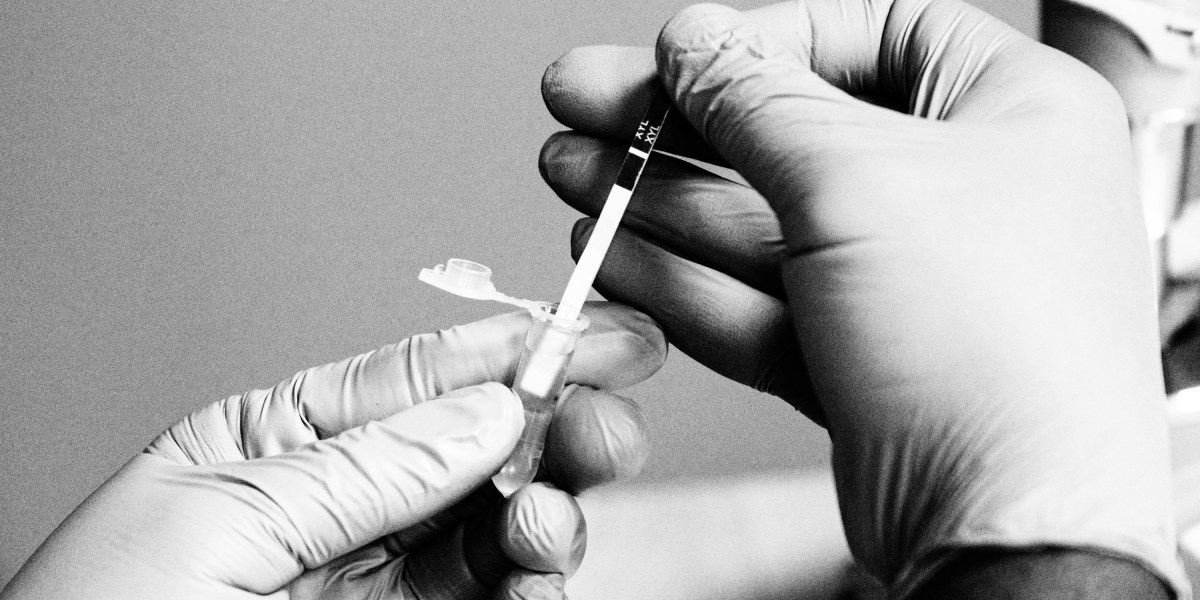There, a research chemist named Ed Sisco and his team had developed methods for detecting trace amounts of drugs, explosives, and other dangerous materials—techniques that could protect law enforcement officials and others who had to collect these samples. Essentially, Sisco’s lab had fine-tuned a technology called DART (for “direct analysis in real time”) mass spectrometry—which the US Transportation Security Administration uses to test for explosives by swiping your hand—to enable the detection of even tiny traces of chemicals collected from an investigation site. This meant that nobody had to open a bag or handle unidentified powders; a usable residue sample could be obtained by simply swiping the outside of the bag.
Sisco realized that first responders or volunteers at needle exchange sites could use these same methods to safely collect drug residue from bags, drug paraphernalia, or used test strips—which also meant they would no longer need to wait for law enforcement to seize drugs for testing. They could then safely mail the samples to NIST’s lab in Maryland and get results back in as little as 24 hours, thanks to innovations in Sisco’s lab that shaved the time to generate a complete report from 10 to 30 minutes to just one or two. This was partly enabled by algorithms that allowed them to skip the time-consuming step of separating the compounds in a sample before running an analysis.
The Rapid Drug Analysis and Research (RaDAR) program launched as a pilot in October 2021 and uncovered new, critical information almost immediately. Early analysis found xylazine—a veterinary sedative that’s been associated with gruesome wounds in users—in about 80% of opioid samples they collected.
This was a significant finding, Sisco says: “Forensic labs care about things that are illegal, not things that are not illegal but do potentially cause harm. Xylazine is not a scheduled compound, but it leads to wounds that can lead to amputation, and it makes the other drugs more dangerous.” In addition to the compounds that are known to appear in high concentrations in street drugs—xylazine, fentanyl, and the veterinary sedative medetomidine—NIST’s technology can pick out trace amounts of dozens of adulterants that swirl through the street-drug supply and can make it more dangerous, including acetaminophen, rat poison, and local anesthetics like lidocaine.
What’s more, the exact chemical formulation of fentanyl on the street is always changing, and differences in molecular structure can make the drugs deadlier. So Sisco’s team has developed new methods for spotting these “analogues”—compounds that resemble known chemical structures of fentanyl and related drugs.
B. HAYES/NIST
The RaDAR program has expanded to work with partners in public health, city and state law enforcement, forensic science, and customs agencies at about 65 sites in 14 states. Sisco’s lab processes 700 to 1,000 samples a month. About 85% come from public health organizations that focus on harm reduction (an approach to minimizing negative impacts of drug use for people who are not ready to quit). Results are shared at these collection points, which also collect survey data about the effects of the drugs.
Jason Bienert, a wound-care nurse at Johns Hopkins who formerly volunteered with a nonprofit harm reduction organization in rural northern Maryland, started participating in the RaDAR program in spring 2024. “Xylazine hit like a storm here,” he says. “Everyone I took care of wanted to know what was in their drugs because they wanted to know if there was xylazine in it.” When the data started coming back, he says, “it almost became a race to see how many samples we could collect.” Bienert sent in about 14 samples weekly and created a chart on a dry-erase board, with drugs identified by the logos on their bags, sorted into columns according to the compounds found in them: heroin, fentanyl, xylazine, and everything else.




